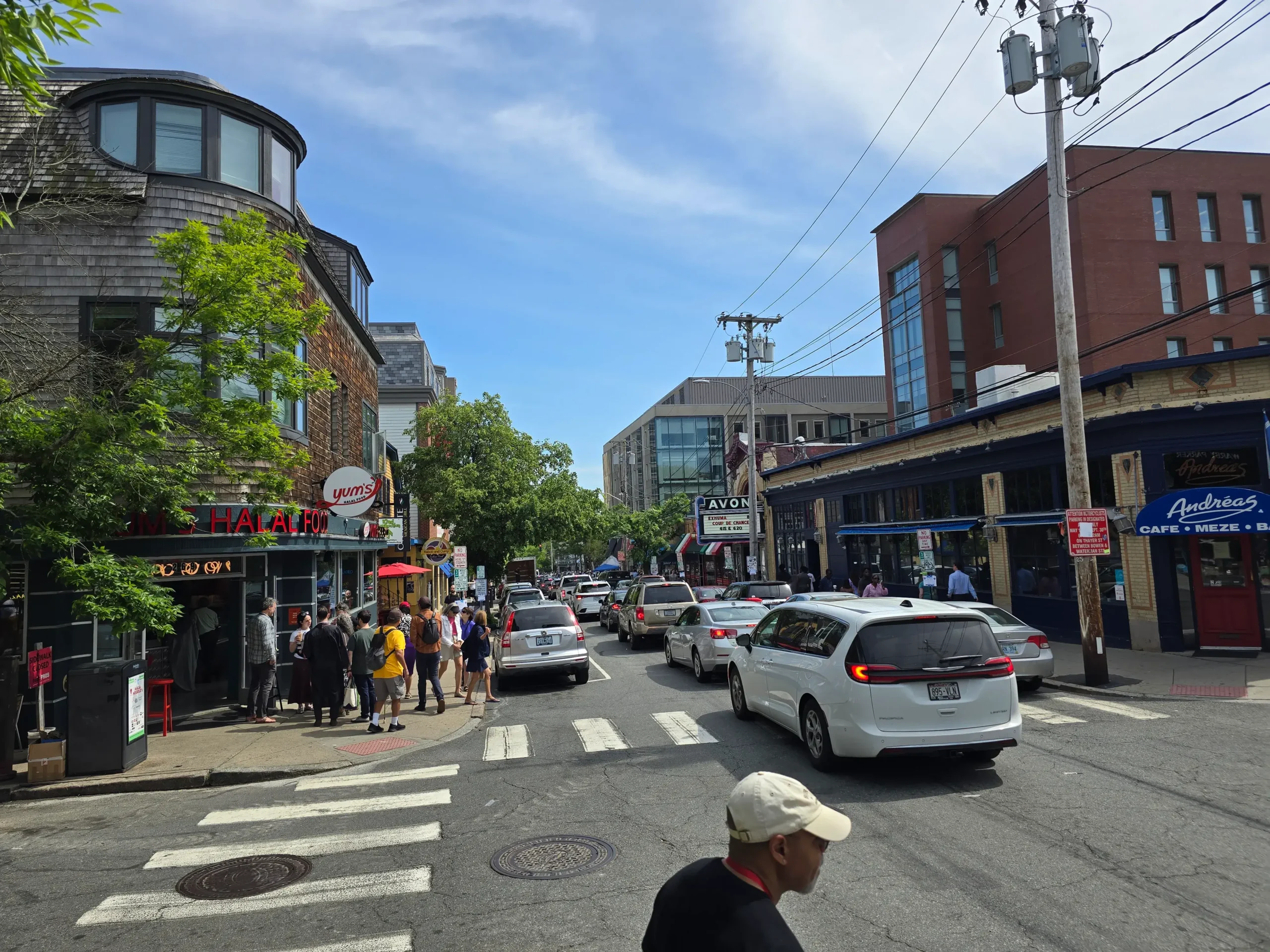Thayer Street is one of the densest areas in Providence and an example of a street primed for pedestrian-only access. With its numerous diverse businesses and people, and being home to Brown University and the Rhode Island School of Design, it’s one of the main central points of Providence. However, the car-centric layout has continually burdened Thayer, holding it back from its full potential to be a true community hub.
Largely made up of vehicle space, two sides of parking and a wide lane are given to automobiles, which often additionally park on crosswalks and illegally without ramifications. At the same time, crowds of pedestrians walk shoulder-to-shoulder on narrow, broken sidewalks. Thayer resembles a busy New York City street minus the bike lanes and pedestrian infrastructure, with an overindulgence in needless on-street parking. It becomes so erratic that when the universities are in session, pedestrians have to dangerously share the street amongst cars and drivers who often behave as if they don’t exist.
If the city considers this idea, immediate criticisms may arise from delivery and food pickup access in conjunction with adverse effects on neighboring businesses. However, cities in the United States and worldwide have been converting busy streets into pedestrian areas for some time now. Locally, Providence—and even Thayer itself—often have days where they close off their streets to car traffic to great success. Business booms, deliveries are adequately covered through designated areas and schedules, spaces become more vibrant, and essentially, everyone wins.
Other hurdles to overcome are the nearby universities and powerful special interest groups. Recently, a bike lane was proposed nearby on South Water Street. Despite an uphill battle against these groups, the city went ahead and built the lane; however, it wasn’t without unending pushing by the community to get it done. If there is that much of a fight against a more straightforward project like a bike lane, how much opposition would there be to permanently converting a street to pedestrian-only access?
Needless to say, the benefits cannot be understated. With cars decentralized, visitors will be more encouraged to walk, bike, and bus, decreasing traffic, noise, and pollution. With a pedestrian focus, accessibility increases, allowing more people to access the area safely. Families and children can wander safely, those with disabilities would be able to access the area, and the everyday person wouldn’t have to fear for their lives crossing the street. Following these benefits, the city would save money and foster a healthier and more lively community around Thayer. It could be used as a model, paving the way for the conversion of other busy Providence streets.
